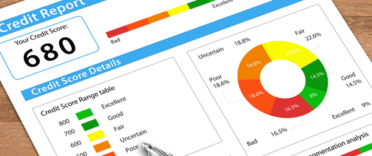What is the pension carry-forward rule?
 An individual can currently contribute up to £60,000 of 'relevant earnings' in a tax year and receive tax relief at their marginal rate on these contributions. This is known as the 'annual allowance'. To understand the carry-forward rules correctly, it is important to note that the pension annual allowance was increased from £40,000 to £60,000 on 6th April 2023.
An individual can currently contribute up to £60,000 of 'relevant earnings' in a tax year and receive tax relief at their marginal rate on these contributions. This is known as the 'annual allowance'. To understand the carry-forward rules correctly, it is important to note that the pension annual allowance was increased from £40,000 to £60,000 on 6th April 2023.
Not all earnings are considered 'relevant earnings', as they exclude dividends and earnings from investments. This annual allowance includes all pension contributions from other sources such as an employer and you must have been a member of a qualifying pension scheme in the years in question. This annual allowance is tapered for higher earners, but more on this later.
In addition to this annual allowance, an individual can also carry forward any unused allowance from the previous three years and obtain tax relief on those contributions. This is providing they were a member of a qualifying scheme in each of the previous three years, but they did not make any contributions in those years. If there were no earnings in any of the years in question, they can still contribute £3,600 gross into a pension and get tax relief.
How does pension carry-forward work?
Pension carry-forward rules allow an individual to carry forward any unused annual allowance from the three previous tax years and still receive tax relief on their contributions.
When carrying forward allowances from previous years, you must use up the limit for the current year and then go back three years and start using that year's allowance first. So, in tax year 2024/25 once you have used this year's allowance, you then would go back to 2021/22 and use any unused allowance from that year and then move forward to the next year, and so on.
One key aspect of the carry-forward rule is that you cannot receive tax relief on contributions in excess of your earnings in any tax year. For example, if an individual earns £80,000 in a tax year, they can contribute up to £60,000 to their pension (maximum annual allowance), but then only carry forward a maximum of £20,000 from the previous three years. This will make a total contribution of £80,000, which is the amount earned in that tax year.
The carry-forward rule is particularly useful if you have a variable income from year to year, which can happen if you are self-employed or receive variable annual bonuses.
Pension carry-forward rule example
Below is an example to illustrate the carry-forward rule:
| Tax year | Annual allowance | Contributions made | Unused allowance |
| 2021/22 | £40,000 | £20,000 | £20,000 |
| 2022/23 | £40,000 | £15,000 | £25,000 |
| 2023/24 | £60,000 | £40,000 | £20,000 |
| 2024/25 | £60,000 | £60,000 | £0 |
|
Total unused carry forward tax allowance (2024/25)
|
£65,000 (assuming earnings are above £105,000) |
Can everyone carry forward unused pension contributions?
You can carry forward unused tax relief on pension contributions provided:
- You are a member of a qualifying pension scheme.
- You have used up your annual allowance for the current tax year.
- You have had qualifying income in each of the last 3 years, or if not, the carry forward relief will be restricted to £3,600 in any tax year.
- You haven't triggered the Money Purchase Annual Allowance (see later in this article).
What happens if you exceed the annual allowance?
If you exceed the annual allowance, you will not receive pension tax relief on any contributions over the maximum allowance and you will be liable to an additional tax bill called the 'annual allowance charge'. This fine is not paid directly, but added to the rest of your taxable income for the year and your overall tax liability calculated via your online tax return. If there is a substantial charge, it could be paid out of your pension scheme funds. You should contact your scheme administrator if this happens to you.
What is tapering for high-income earners?
The annual allowance of £60,000 may be reduced or 'tapered' if your threshold income is over £260,000. The 'threshold income' is your annual income before tax, less any personal pension contributions and ignoring any employer pension contributions. If it is below £260,000, the tapered reduction will not normally apply.
If your threshold income is above £260,000 then you will need to calculate your 'adjusted income'. Broadly speaking, your adjusted income is all the income that you are taxed on including dividends, savings interest and rental income, plus the value of your own and any employer pension contributions. If your adjusted income is above £260,000, the annual income allowance will reduce by £1 for every £2 that your adjusted income exceeds £260,000.
The maximum annual allowance reduction is £50,000, which reduces the annual allowance to £10,000 on an adjusted income of £360,000 or higher.
It is possible to still use carry forward rules even if you are subject to the tapered annual allowance.
Can I use pension carry forward if I have been a non-UK resident?
An individual who has been non-UK resident is able to carry forward unused annual allowance from tax years when they were not a UK resident. This is provided they were a member of a qualifying pension scheme at some point in the tax year being carried forward from.
Can I use carry forward if I am currently accessing a pension?
If you start to access money from a defined contribution pension scheme, the amount of pension contributions that you can claim tax relief on reduces. This is known as the Money Purchase Annual Allowance (MPAA). If you have triggered the MPAA then you can't use carry-forward rules to increase the amount you can pay into a defined contribution pension.
MPPA is triggered if you do any of the following:
- Take your entire pension as a lump sum or as ad-hoc lump sums.
- If you access your pension through flexi-access drawdown and start taking an income.
- If you buy an investment-linked or flexible annuity where your income could go down.
MPAA is not normally be triggered if:
- You take a tax-free cash lump sum and buy a lifetime annuity that provides a guaranteed income for life that is fixed.
- You take a tax-free cash lump sum and put your pension pot into a flexi-access drawdown scheme but don’t take any income from it.
- You cash in small pension pots valued at less than £10,000.
For more information on pension carry forward, check out the details on the HMRC website.
Free pension calculator
If you need further information and advice on your pension, head over to our handy pension calculator to help you work out your contributions and potential future pension.




